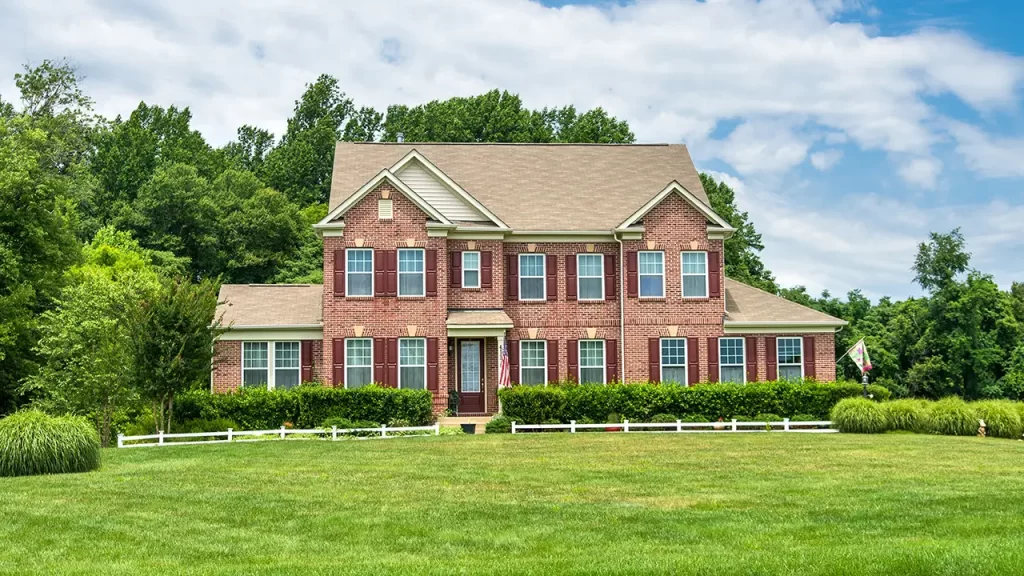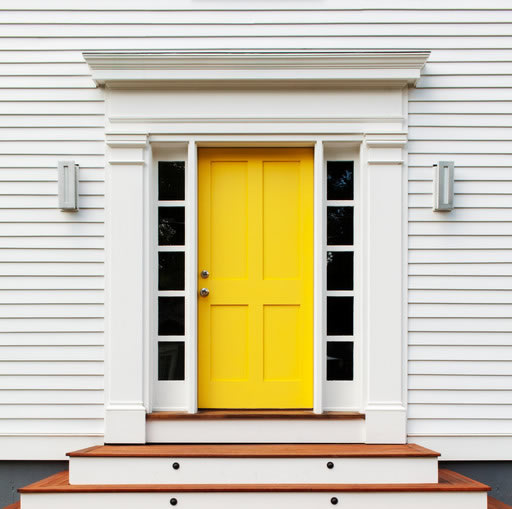Selecting the right siding for your home is crucial to enhancing its curb appeal and ensuring it blends seamlessly with the architectural style. Here’s a guide on matching siding with different home styles, along with examples of successful matches.

Colonial Style
Colonial homes are known for their symmetrical design, brick or wood exteriors, and double-hung windows with shutters. To complement this style, wood lap siding is an excellent choice for its classic and historically accurate appearance. Brick veneer is another option, offering the traditional colonial look without the weight and cost of full brick. For example, a Colonial home with white wood lap siding and black shutters provides a timeless, elegant appearance, while brick veneer siding paired with white trim enhances the traditional colonial aesthetic.
Victorian Style
Victorian homes are characterized by ornate details and trim, steep gable roofs, and varied textures and vibrant colors. Wood shingles add texture and complement the intricate details of Victorian architecture. Board and batten siding offers vertical lines that accentuate the height and grandeur of these homes. A Victorian home with painted wood shingles in a pastel palette creates a charming, storybook feel. Alternatively, board and batten siding in a deep color like burgundy, paired with white trim, emphasizes the architectural details.
Craftsman Style
Craftsman homes feature low-pitched roofs, exposed rafters, and stone or brick accents. Fiber cement siding is a durable option that mimics the look of wood, fitting well with the Craftsman style. Wood shingles or clapboard siding offer a natural, handcrafted appearance. For example, a Craftsman home with fiber cement siding in a muted earth tone like sage green, complemented by stone accents, achieves a harmonious look. Wood clapboard siding stained in a natural wood finish highlights the handcrafted quality of a Craftsman home.
Modern Style
Modern homes are known for their clean lines and minimalistic design, flat or low-pitched roofs, and large windows. Metal panels provide a sleek and contemporary appearance, while stucco offers a smooth finish that enhances the minimalist look. A modern home with metal panel siding in a matte finish exudes a sleek, industrial vibe. Stucco siding in a crisp white or light gray creates a clean, modern aesthetic.
Ranch Style
Ranch homes typically have a single-story, long and low profile, simple open floor plans, and large windows and sliding glass doors. Vinyl siding is a versatile and low-maintenance option that complements the simplicity of Ranch homes. Brick or stone veneer adds texture and visual interest. For instance, a Ranch home with horizontal vinyl siding in a neutral color like beige or taupe enhances the simple, linear design. Brick veneer siding in a warm red or brown creates a cozy, rustic feel.
Mediterranean Style
Mediterranean homes feature stucco walls, red-tiled roofs, and arched windows and doors. Stucco siding is a traditional and authentic choice that aligns well with this architectural style. Stone veneer adds texture and complements the stucco. A Mediterranean home with creamy stucco siding and terracotta roof tiles exudes classic elegance. Stone veneer accents around windows and doors further enhance the architectural features.
Tips for Successful Matching
When selecting siding, consider the color palette to ensure it complements both the architectural style and the surrounding environment. The texture and material of the siding should align with the home’s style and your desired aesthetic. Additionally, incorporating trim, shutters, and other details can enhance the siding and overall design.
Choosing the right siding for your home’s architectural style not only boosts its curb appeal but also preserves its historical and aesthetic integrity. By understanding the characteristics of each style and choosing complementary siding options, you can create a harmonious and visually appealing exterior.
Feel free to share more details about your specific project if you need tailored advice!
